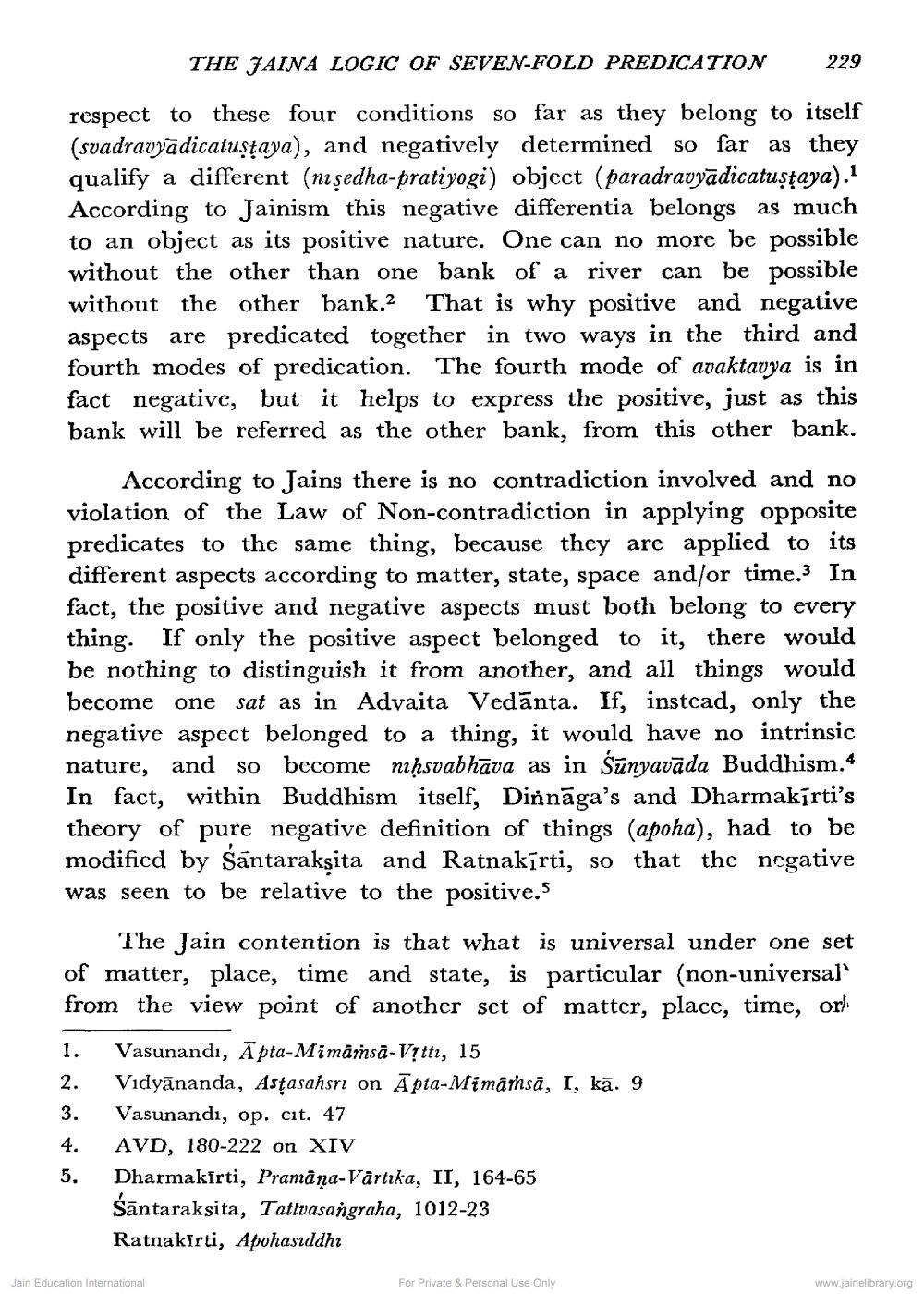________________
THE JAINA LOGIC OF SEVEN-FOLD PREDICATION
229
respect to these four conditions so far as they belong to itself (svadravyādicatuștaya), and negatively determined so far as they qualify a different (nı şedha-pratiyogi) object (paradravyādicatustaya).1 According to Jainism this negative differentia belongs as much to an object as its positive nature. One can no more be possible without the other than one bank of a river can be possible without the other bank. That is why positive and negative aspects are predicated together in two ways in the third and fourth modes of predication. The fourth mode of avaktavya is in fact negative, but it helps to express the positive, just as this bank will be referred as the other bank, from this other bank.
According to Jains there is no contradiction involved and no violation of the Law of Non-contradiction in applying opposite predicates to the same thing, because they are applied to its different aspects according to matter, state, space and/or time. In fact, the positive and negative aspects must both belong to every thing. If only the positive aspect belonged to it, there would be nothing to distinguish it from another, and all things would become one sat as in Advaita Vedānta. If, instead, only the negative aspect belonged to a thing, it would have no intrinsic nature, and so become niņsvabhāva as in Sūnyavāda Buddhism.* In fact, within Buddhism itself, Dinnāga's and Dharmakīrti's theory of pure negative definition of things (apoha), had to be modified by Sāntarakṣita and Ratnakīrti, so that the negative was seen to be relative to the positive.s
The Jain contention is that what is universal under one set of matter, place, time and state, is particular (non-universal from the view point of another set of matter, place, time, or 1. Vasunandı, Āpta-Mimāṁsā-Vịttı, 15
Vidyānanda, Astasahsr on Apta-Mimamsā, I, kā. 9
Vasunandı, op. cit. 47 4. AVD, 180-222 on XIV
Dharmakīrti, Pramāna-Vārtika, II, 164-65 śāntaraksita, Tattvasangraha, 1012-23 Ratnakirti, Apohasiddhr
Jain Education International
For Private & Personal Use Only
www.jainelibrary.org




